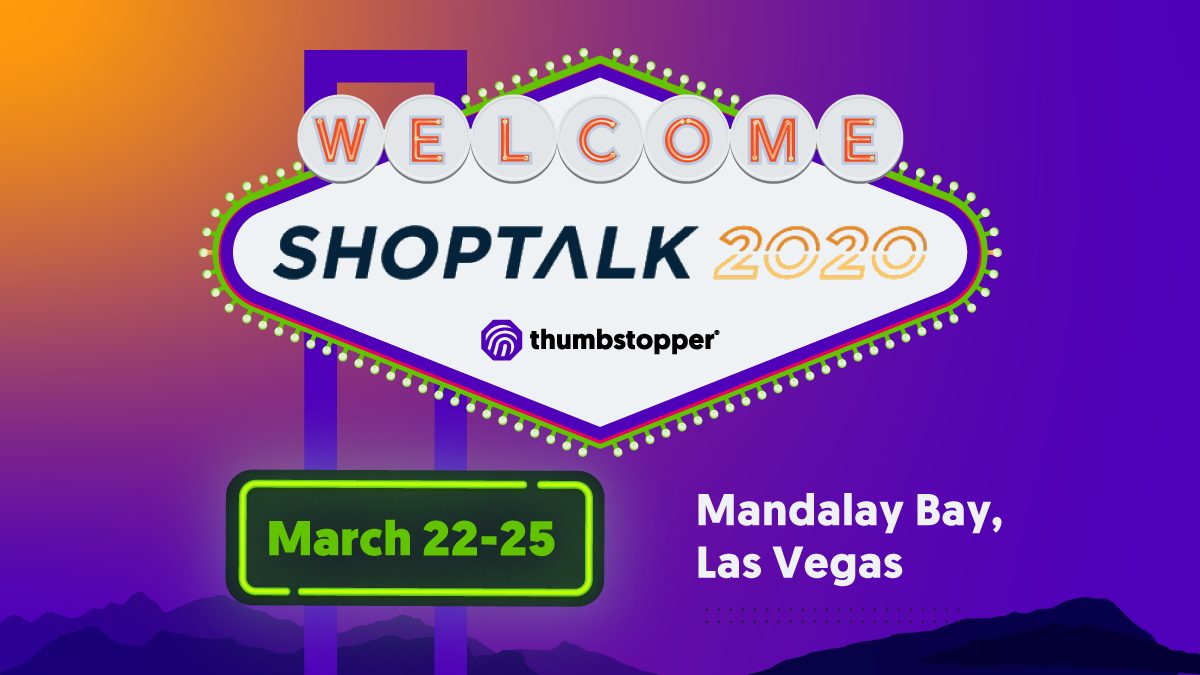- Shoptalk 2020 marks the first appearance by ThumbStopper at the annual convention
- ThumbStopper has pre-scheduled one-on-one meetings with prospective businesses during the event
- Chief Marketing Officer Alicia Alongi will participate in Shoptalk’s “Emerging Technology Spotlight” series as a featured speaker
TAMPA, FLA. –ThumbStopper®, a SaaS technology company that enables brands to curate, segment and syndicate social media content, today announced its participation at Shoptalk 2020, taking place March 22-25, 2020 at Mandalay Bay Resort & Casino in Las Vegas, Nevada.
Now entering its fifth year, Shoptalk brings thousands of attendees across numerous business industries to discuss the future of retail, connecting brands and retailers with large tech, emerging startups, venture capital investors, and others. Shoptalk 2020 marks ThumbStopper’s first appearance at the retail mega conference.
“We’re extremely optimistic about the opportunity Shoptalk will provide us with,” said Branden Elwell, VP of Business Development. “The quick, 15-minute meeting format is ideal for us. Our solution is so simple and seems to resonate with brands immediately. Getting undivided attention for this brief window is all we need to showcase the problems we solve for brands that sell through retailers.”
ThumbStopper will sit down with prospective businesses to discuss the ThumbStopper Brand Manager™ at pre-scheduled times during the four-day event.
Furthering ThumbStopper’s involvement, Head of Marketing Alicia Alongi has been selected to speak on behalf of ThumbStopper’s offerings and value propositions as part of Shoptalk 2020.
Alongi, and by extension, ThumbStopper, was selected as one of 100 companies to participate in the Emerging Technology Spotlight series, which showcases a curated lineup of novel technologies that Shoptalk thinks are relevant, interesting, and inspiring for their audience. Selected companies and speakers cannot pay for placement and instead have to qualify through technological and innovative merit.
Alongi will speak during Track 4 of the Emerging Technology Spotlight on Sunday, March 22, between 3:30 and 4:10 p.m.
“I’m thrilled to have the chance to share ThumbStopper’s brand-to-local solution with the Shoptalk audience,” said Alongi. “As a marketer, you understand what a huge platform – and therefore opportunity – this is for our brand. We solve such a universal problem – connecting brand content to local retailers – that all we need is a platform like Shoptalk to catch the attention of the amazing brands that are attending.”
Interested attendees can also request a one-on-one meeting with ThumbStopper outside of Shoptalk’s interview hours by clicking here. More information on ThumbStopper is available here.
About Shoptalk
Held annually in Las Vegas, Shoptalk is an unprecedented gathering of individuals and companies reshaping how consumers discover, shop and buy. The event provides a platform for large retailers and branded manufacturers, startups, tech companies, investors, media and analysts to learn, network, collaborate and evolve
About ThumbStopper
ThumbStopper® helps brands and retailers generate micro-moments of engagement through the curation, segmentation, and syndication of high-value content across leading social media platforms. ThumbStopper’s Brand Manager™ seamlessly connects branded digital assets to your most likely consumers via native organic social posting and advertising at scale.
Contacts
Alicia Alongi
Chief Marketing Officer
aalongi@thumbstopper.com
Angel Kennedy
Content Marketing Manager
akennedy@thumbstopper.com




